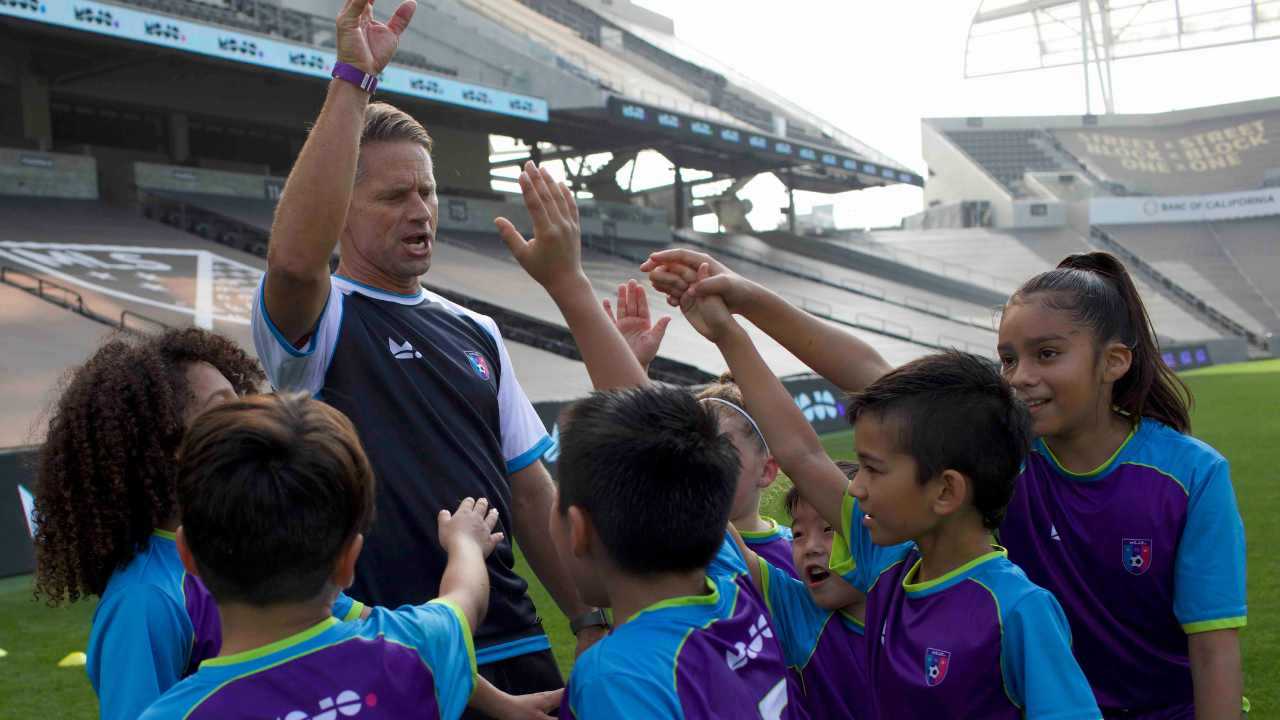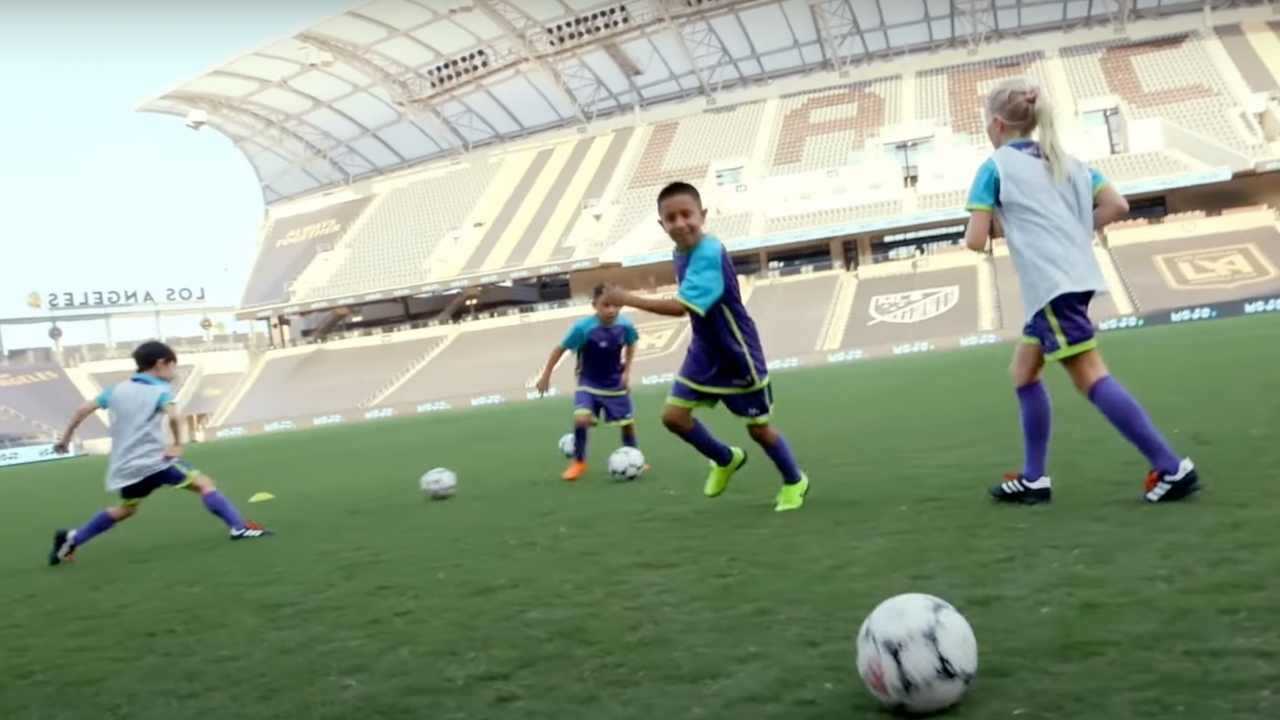What Now? Youth Soccer and Covid
Does the spike in Covid cases tied to youth sports change how we feel about the return to play?
Laura Lambert
| 6 min read

Canva
It’s hard to ignore the headlines: “Youth sports and other extracurriculars are spreading Covid-19, health officials say,” “Are youth sports an engine of B.1.1.7 outbreaks?” There’s Dr. Anthony Fauci himself telling George Stephanopoulos, “We’re finding out that it’s the team sports where kids are getting together, obviously many without masks, that are driving it, rather than in the classroom spread.”
And then there’s the timing. In cities across the country, spring seasons had just gotten underway. For a lot of families, things were just starting to feel normal again.
But the truth is that we’ve known all along that the road back to normal would be bumpy. As Dan Gould, director of the Institute for Youth Sports at Michigan State told MOJO back in January, “There’s the old Yogi Berra quote, It ain’t over ‘til it’s over.”
And as the headlines suggest, it’s not over.
Here’s how some of the largest state youth soccer associations are handling the latest Covid curveball.
Massachusetts
“It is a fluid situation,” says Tamie Endow, member services manager and Covid safety officer for the Massachusetts Youth Soccer Association. Endow stays abreast of the numbers coming from the state, which change frequently — even daily. “It’s data-driven. We have to be ready to react as soon as they make their changes.”
Early on, Mass Youth Soccer put out robust Covid protocols that follow the state’s phased approach. (The state is currently at phase 4, step 1.) “If our members aren’t following them, it doesn’t help,” says Endow. “But they’ve done a great job.” Every member organization has a Covid safety officer and every team has a Covid coordinator.
“At the end of the day, it’s about the kids. It’s about safety. And it’s about the health — the physical health, the mental health — of our players."
And while there were some teams that opted not to play in the fall, the success of the fall season prompted more to join this spring. “Once they got moving with the protocol, it wasn’t as overwhelming as the 22-page protocol made it seem,” she says. “That’s huge to ask our volunteers to take on another responsibility — and they’ve done it and done it well.”
For Endow, this moment is about balancing the very real risks that the coronavirus poses with the other aspects of health that sport provides.
“At the end of the day, it’s about the kids. It’s about safety. And it’s about the health — the physical health, the mental health — of our players,” she says. “Just getting back on the field is a healthy thing in so many ways. That’s the bigger picture for me.”
Southern Texas
For Jennifer Davis, executive director of the South Texas Youth Soccer Association, the focus is the same — getting kids on the field, and keeping them safe — but the overall situation looks a bit different. On March 2, Texas Governor Greg Abbott lifted all mask mandates and re-opened the state. “We’re essentially fully operational, fully open in terms of play,” says Davis.
Still, across South Texas — an area that covers cities like Houston, Austin and San Antonio as well as smaller, more rural towns — there are layers of regulations at the county and city level to be navigated, which can lead to confusion and pushback. Says Davis, “A lot of local ordinances and local parks still require masks and social distancing at events.”
Even as the state has opened, certain procedures — masks in the stands, staggered game times, creating additional space between games, one-way entrances and exits — as well as the outdoor nature of the game itself have helped keep youth soccer relatively free of serious outbreaks. The Covid handbook outlines other safety measures that are there should the situation change.
“For us, we consider what to do based on the CDC and what’s best for our players."
South Texas — and youth soccer, in particular — has not seen the spike in cases mentioned in the recent spate of news coverage, most of which are tied to indoor sports such as wrestling, hockey and basketball, as well as the spread of the new, more transmissible variant of the coronavirus, which is surging in the upper Midwest.
“For us, we consider what to do based on the CDC and what’s best for our players,” Davis says. And, to her, the future of youth soccer in South Texas, at present, looks increasingly clear. “Unless we do see a huge spike, we’re moving in that positive direction.”
Northern California
Like South Texas, Cal North Youth Soccer covers a wide swath of a massive state — from Visalia, in Central California, all the way up to the Oregon border. The system of colored tiers — from purple, where there is widespread transmission, to yellow, where spread is minimal — varies from county to country, resulting in a patchwork that covers that entire northern half of the state.
The approach, for Cal North, has been to find flexible solutions, says Kevin Crow, Cal North technical director, who is based in the Bay Area.
“Basically, what we’ve done as an association is, as long as you’re adhering to your local county guidelines, then you are eligible to play,” says Crow. And it can be even more granular, he says. “Ultimately, the city issues the field permit.” And to get those permits, leagues need to submit their Covid plan.
“We have learned how important it is to be outside, to have social interaction. Zoom doesn’t cut it.”
The silver lining has been that outdoor soccer in a state with fair weather has been relatively safe. “There’s been a safe way to play almost since they shut it down,” he says. “We were more concerned with parents on the sidelines. It’s harder to control the sideline and the parking lot.”
As part of one of the last states in the U.S. to open up — California Governor Gavin Newson has suggested June 15 as a potential date — patience remains a virtue.
“It hasn’t been easy,” admits Crow. “We have learned how important it is to be outside, to have social interaction. Zoom doesn’t cut it.”




